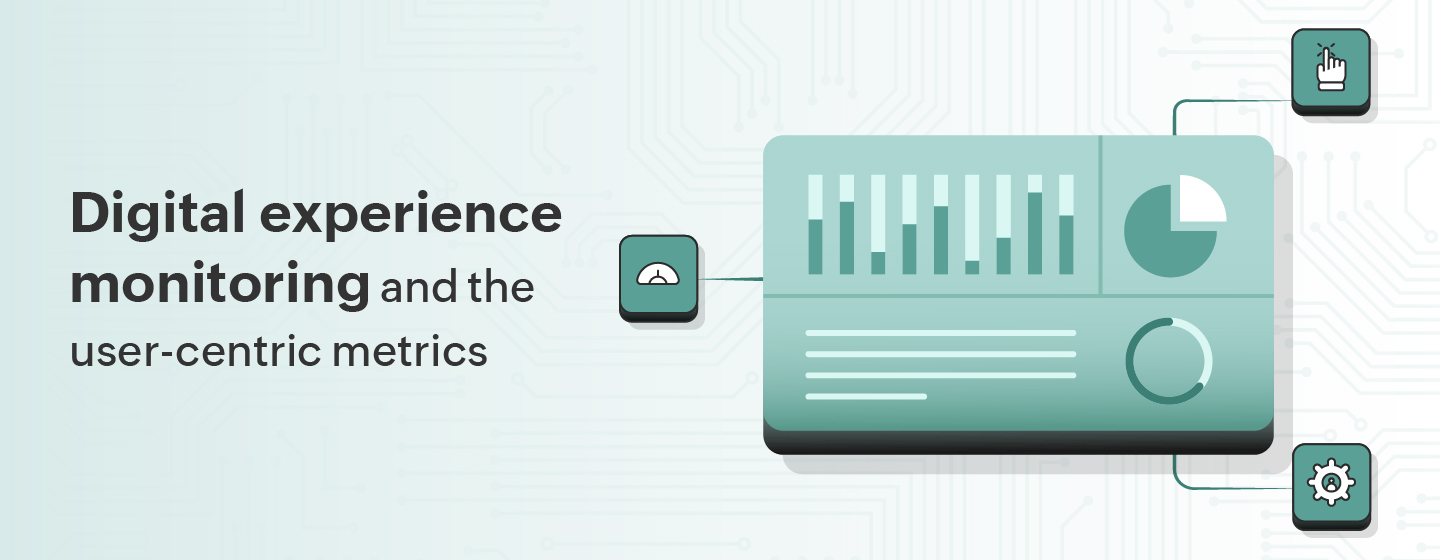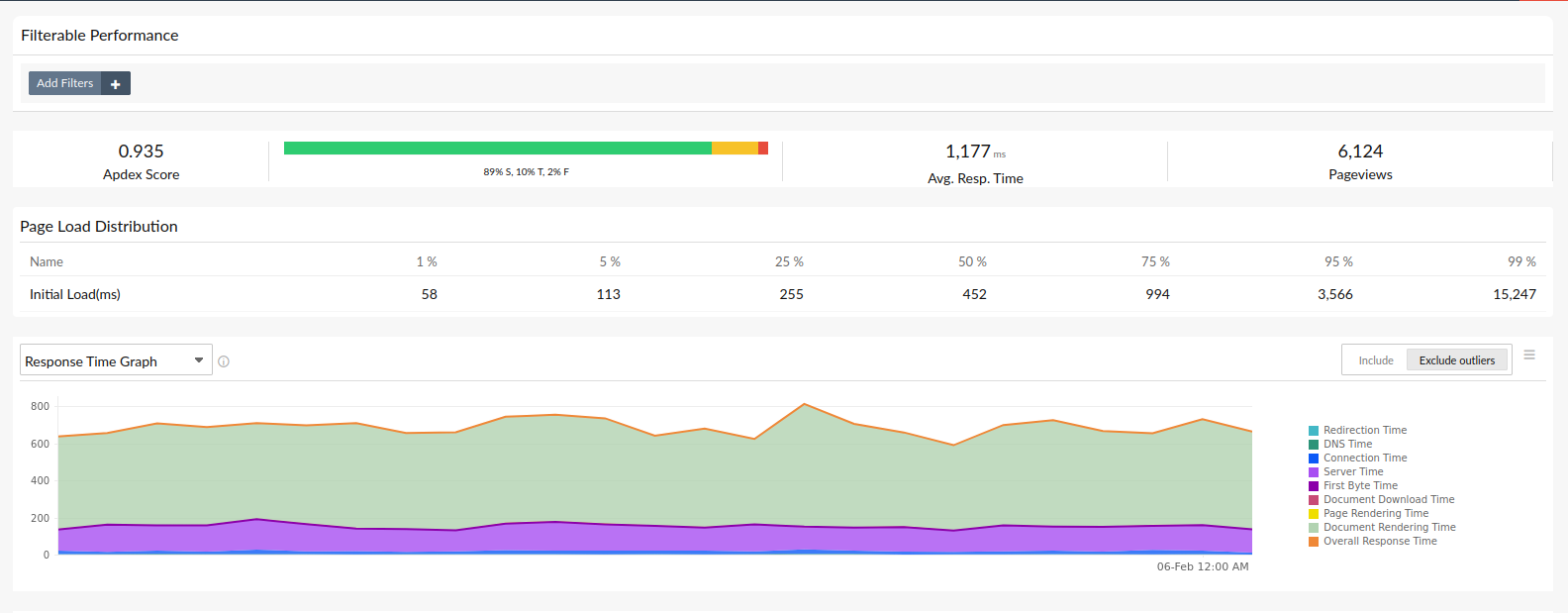Understanding User-Centric Metrics in Digital Experience Monitoring (DEM)

User experience holds the utmost importance, and closely monitoring the digital experience from the user's standpoint is essential for achieving success. User-centric metrics offer invaluable insights into how users interact with digital platforms and enables businesses to optimize performance, enhance satisfaction, and drive growth. In this blog, we'll delve into the significance of user-centric metrics in digital experience monitoring and explore the key metrics that businesses should prioritize.
User-centric metrics provide a direct reflection of customer satisfaction by measuring various aspects of the digital experience, including usability, performance, and functionality. Monitoring these metrics allows businesses to identify pain points and address them proactively, thereby enhancing overall satisfaction and loyalty. Understanding how users engage with digital platforms is crucial for driving business outcomes. User-centric metrics offer insights into conversion rates, customer retention, and revenue generation. This enables businesses to align their digital strategies with their objectives and optimize performance accordingly.
Also, in a competitive marketplace, superior digital experiences can be a significant differentiator. By focusing on user-centric metrics, businesses can gain a deeper understanding of user behavior, preferences, and expectations, allowing them to stay ahead of competitors by delivering personalized and seamless experiences.
The key user-centric metrics
- Page load time
One of the most critical metrics impacting user experience is page load time. Slow-loading pages frustrate users and can force them to leave the page, leading to a spike in the bounce rate. Monitoring page load time helps businesses identify performance bottlenecks and optimize website speed for better user engagement. - Time to interact
Time to interact measures the time it takes for a webpage to become interactive, allowing users to engage with content or perform actions. Minimizing time to interact enhances perceived responsiveness and improves user satisfaction, contributing to a positive digital experience. - Conversion rate
Conversion rate stands for the percentage of users who complete an expected action, like purchasing or filling out a form. Monitoring conversion rates helps businesses evaluate the effectiveness of their digital strategies and identify opportunities for optimization to drive conversions and revenue. - Bounce rate
Bounce rate measures the percentage of visitors who move away from a webpage after visiting one page. Higher bounce rates lead to lower user engagement and irrelevant content. Businesses can identify areas for improvement and optimize content to keep users engaged by analyzing bounce rate alongside other metrics. - User journey analysis
Understanding the user journey—from initial interaction to conversion—is essential for optimizing the digital experience. User journey analysis involves tracking user interactions across multiple touchpoints, identifying drop-off points, and optimizing the journey to minimize friction and drive desired outcomes.
What are Site24x7's offerings in analyzing user-centric metrics?
Here are a few of the Site24x7 features designed to analyze user-centric metrics for digital experience monitoring.
- Real user monitoring (RUM)
Site24x7's RUM capabilities allow you to gain insights into the experience of your website visitors. By monitoring real-user interactions, you can track performance metrics such as page load times, transaction times, and overall user experience across different browsers, devices, and geographic locations. Site24x7 also helps to calculate the global Application Performance Index (Apdex) score, which provides a measure of user satisfaction based on response times. By setting threshold values for acceptable, tolerable, and frustrating user experiences, you can quantify the performance of your digital services and prioritize improvements accordingly.
- Synthetic monitoring
With Site24x7's synthetic monitoring, you can mimic user interactions and transactions from various locations worldwide. By creating synthetic transactions that mimic real user behavior and recording them using our robust recorder, you can proactively identify performance issues, downtime, or errors before they impact actual users.
- Error and performance monitoring
We monitor errors and performance issues encountered by users in real time. By tracking error rates, HTTP status codes, and performance degradation, you can quickly identify and address issues that affect the user experience, such as slow page loads, broken links, or server errors.
- Geographic performance analysis
You can also analyze user experience metrics across different geographic regions. By visualizing performance data on a global map, you can identify latency issues, network congestion, or regional disparities in user experience and optimize content delivery strategies accordingly. - Mobile app monitoring
Our monitoring capabilities also extend to mobile applications, allowing you to track user-centric metrics such as app launch times, response times, and user interactions. By monitoring mobile app performance across various devices and operating systems, you can ensure a seamless digital experience for mobile users.
- Customizable dashboards and reports
With our customizable dashboards and reports you can visualize and analyze user-centric metrics based on your specific requirements. By aggregating and correlating data from different monitoring sources, you can gain actionable insights into user behavior, preferences, and trends over time.
As discussed above, user-centric metrics play a vital role in digital experience monitoring, providing businesses with actionable insights to enhance user satisfaction, drive business outcomes, and gain a competitive edge. By prioritizing metrics such as page load time, time to interact, and user journey analysis, businesses can optimize their digital strategies to deliver exceptional experiences that resonate with your audience.
Comments (0)